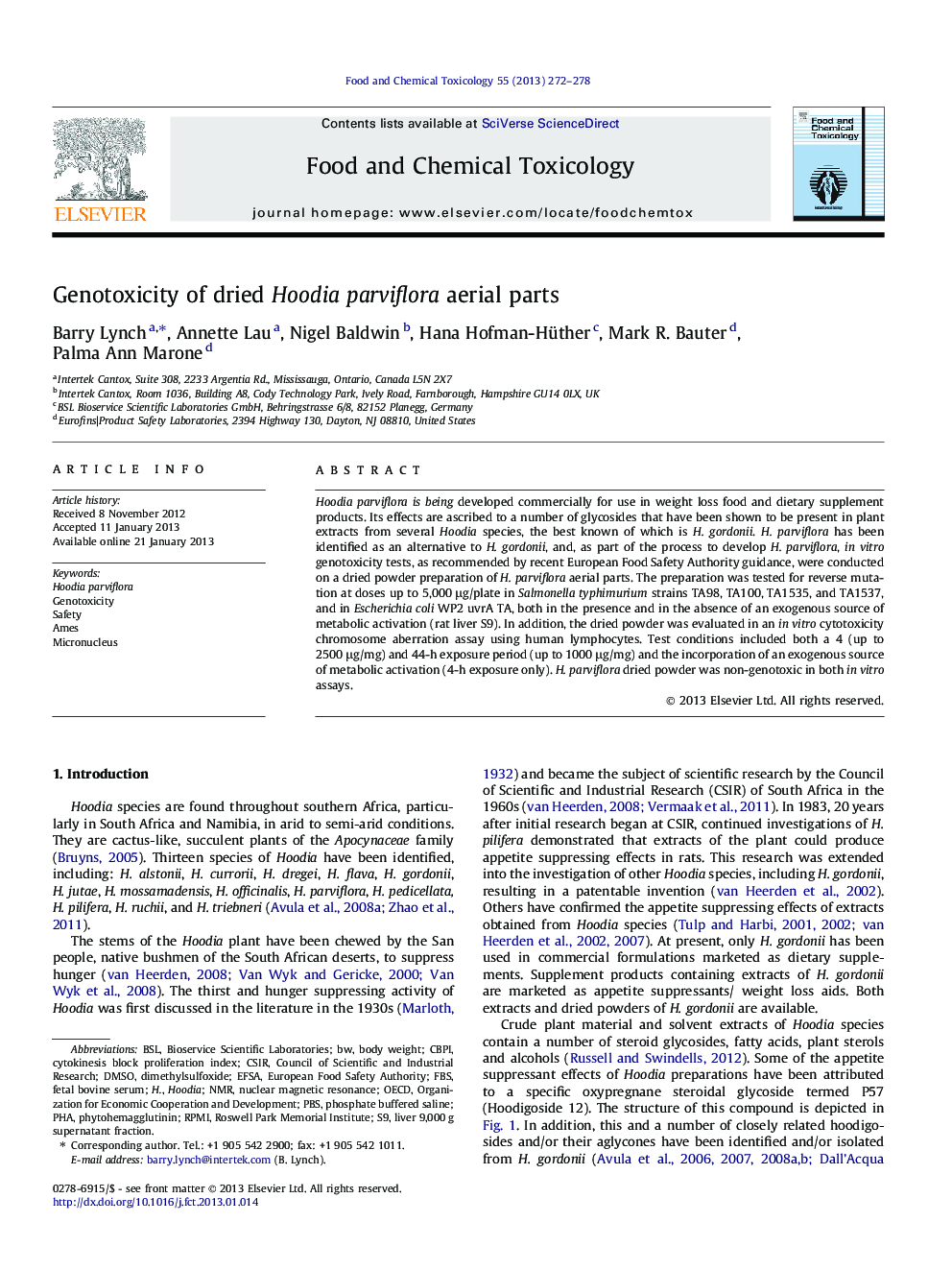| Article ID | Journal | Published Year | Pages | File Type |
|---|---|---|---|---|
| 5851547 | Food and Chemical Toxicology | 2013 | 7 Pages |
Hoodia parviflora is being developed commercially for use in weight loss food and dietary supplement products. Its effects are ascribed to a number of glycosides that have been shown to be present in plant extracts from several Hoodia species, the best known of which is H. gordonii. H. parviflora has been identified as an alternative to H. gordonii, and, as part of the process to develop H. parviflora, in vitro genotoxicity tests, as recommended by recent European Food Safety Authority guidance, were conducted on a dried powder preparation of H. parviflora aerial parts. The preparation was tested for reverse mutation at doses up to 5,000 μg/plate in Salmonella typhimurium strains TA98, TA100, TA1535, and TA1537, and in Escherichia coli WP2 uvrA TA, both in the presence and in the absence of an exogenous source of metabolic activation (rat liver S9). In addition, the dried powder was evaluated in an in vitro cytotoxicity chromosome aberration assay using human lymphocytes. Test conditions included both a 4 (up to 2500 μg/mg) and 44-h exposure period (up to 1000 μg/mg) and the incorporation of an exogenous source of metabolic activation (4-h exposure only). H. parviflora dried powder was non-genotoxic in both in vitro assays.
⺠Dried Hoodia parviflora powder may have utility as a weight loss aid; evaluated for genotoxic activity. ⺠Dried H. parviflora powder tested in in vitro bacterial mutation and mammalian cell cytogenetic assays. ⺠Under the test conditions employed, dried H. parviflora powder showed no evidence of genotoxic activity.
